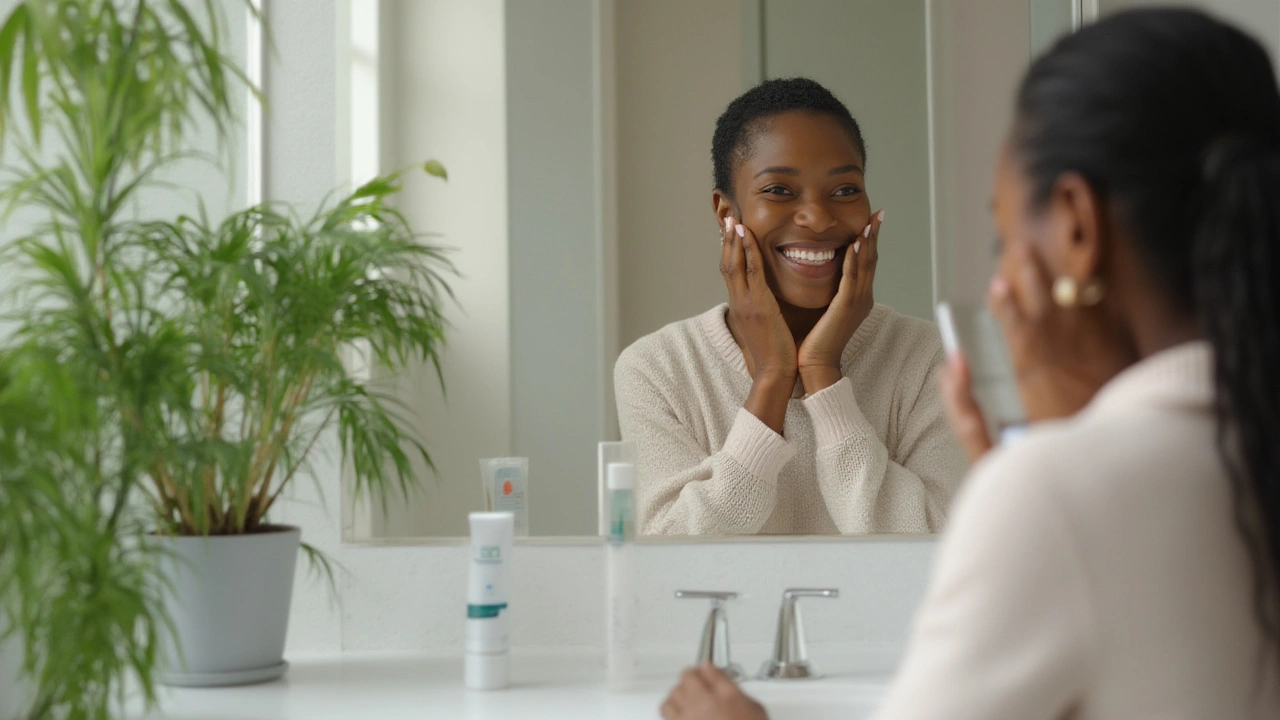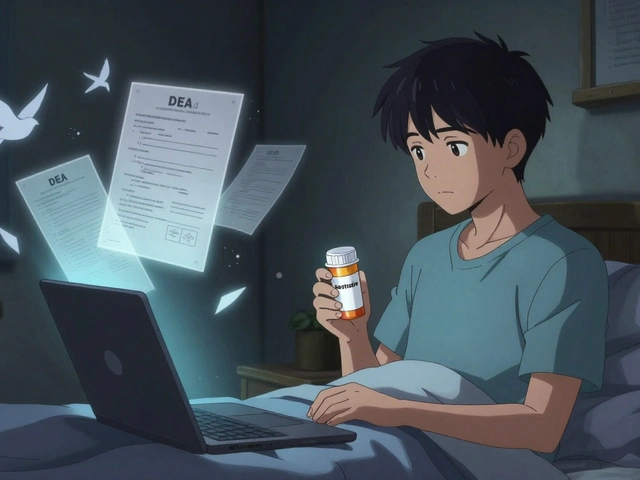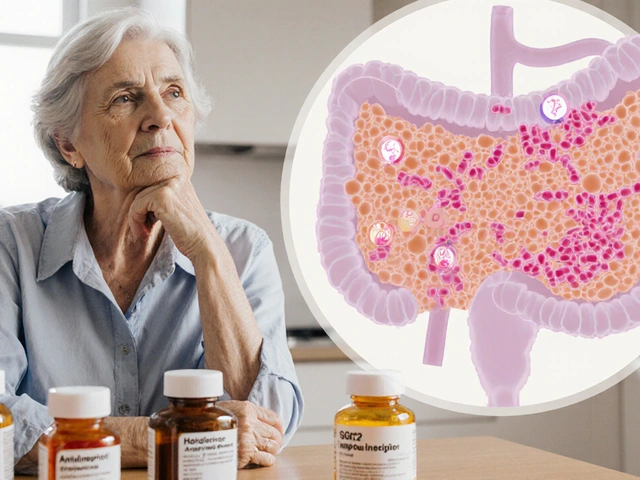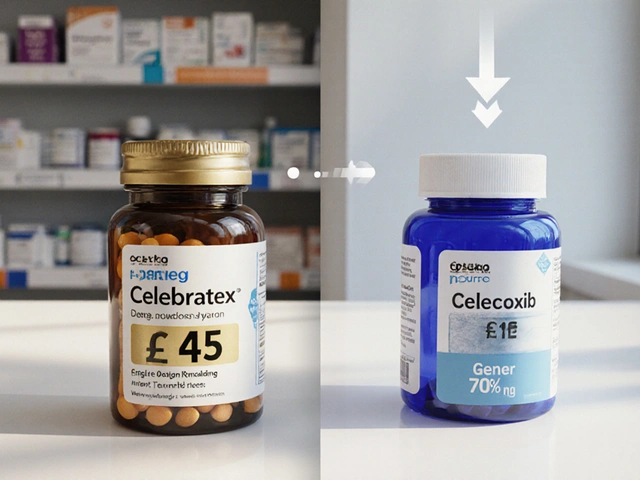
Health July 10, 2025
Elidel Cream for Eczema: Uses, Side Effects, and Skin Care Tips
Just about every parent I know has stared at a patch of dry, red skin on their child, wondering whether they can make it go away without yet another trip to the doctor. And as someone who deals with eczema flare-ups myself—yes, even grown-ups get them—I totally get it: finding a product that soothes without leaving your skin greasy or covered in steroids can feel like searching for a unicorn. That’s where Elidel comes in. Suddenly, there’s this cream in the pharmacy, making big promises to calm the itch and redness, with a safety profile that doesn’t make you wince. If you haven’t heard much about Elidel, or if your doctor has just handed you a prescription and you’re rifling through Google in a panic, rest assured, there’s quite a bit to say, and a lot of real-world advice to offer.
What Is Elidel and How Does It Work?
You might’ve seen Elidel in the eczema aisle or even heard it tossed around in dermatologist offices, but what is it, really? Elidel's official name is pimecrolimus cream, 1%. It’s a relatively new player in the world of eczema management—officially green-lit by the FDA back in 2001 for treating mild to moderate atopic dermatitis, which is just a fancy name for eczema. Unlike steroid creams that can thin out your skin over time, Elidel is considered a “topical calcineurin inhibitor.” It’s like a traffic cop for your immune system: when your skin flares up, your immune cells get a little too rowdy, causing inflammation, redness, and endless itching. Pimecrolimus puts a stop to this overreaction, letting your skin basically chill out and heal.
One thing that sets Elidel apart is that it’s not a steroid. That means you don’t get all the steroid baggage: weakened skin, breakdown of collagen, or those little stretch marks that never go away. Unlike steroids, you can safely use Elidel on delicate areas—think faces, eyelids, necks, and even, for kids over two, those stubborn patches behind the knees or in skin folds. Dermatologists often recommend it as a “steroid-sparing” treatment, especially for times when a steroid isn’t the right tool for the job. If you’re worried about “rebound flares” (where stopping steroids causes things to bounce right back), Elidel tends to avoid that boomerang effect.
According to clinical studies, applying Elidel twice a day can start calming skin within a week, though you might notice improvements even sooner. The active ingredient, pimecrolimus, specifically targets “calcineurin”—this enzyme helps control the firestorm of inflammation during an eczema flare. By blocking it, Elidel reduces unwanted immune responses right at the surface of the skin. One neat thing? Unlike most creams that just moisturize, Elidel tackles the root of the problem. And for real-world numbers: in a six-month study, around 50% of patients using Elidel had improvements good enough to skip steroids altogether.
Still, this isn’t an over-the-counter fix. You’ll need a prescription, and your doctor may give it alongside other routines, like using unscented moisturizers or avoiding certain triggers. And one more quick fact: Elidel is for short-term and intermittent long-term use, so it’s not meant for 24/7, year-round application. Follow your provider’s instructions.
When I first got Elidel for my own patchy, stubborn eczema on my hands, I was honestly skeptical. It felt light, soaked in fast, and didn’t sting—no burning or weird smells. Within days, the swelling and itching backed way off. And unlike when I used steroids, my skin didn’t look shiny or paper-thin. That’s a win in my book.
Benefits and Effectiveness: How Elidel Stands Out
So, let’s talk about the perks. Why pick Elidel over dozens of other creams at the pharmacy? First off, Elidel is all about flexibility. Not every eczema treatment is safe for faces, which tend to have a thinner barrier and react badly to long-term steroid use. Elidel doesn’t cause skin bleaching, thinning, or fragility, making it a game-changer for eyelids, mouths, and even sensitive areas. If you or your little ones are constantly told to avoid using strong creams near the eyes, Elidel steps in as a solution.
Another advantage: No steroid-related withdrawal. When folks stop steroids cold turkey, especially after months of use, the skin riots—turns red, angry, and itchy again. Most studies tracking Elidel users over long periods report that stopping and restarting Elidel doesn’t cause such a mess. It fits in with those “as needed” schedules, unlike steroids which might require weaning off. And if you’re juggling different triggers—like weather, allergies, and stress—Elidel fills in the gaps.
If you check out data from multiple trials, the numbers back up its reputation: Over a 12-month period, 70% of people using Elidel saw a major dip in eczema flares, and most needed fewer steroid prescriptions. Kids over two years old were able to safely use it for months on end without scary side effects. My friend Sarah, who lives in humid Houston with two eczema-prone kids, says Elidel is the only thing that keeps school pictures from being ruined by red splotches on their faces.
One thing I love is that people can combine Elidel with their go-to moisturizers—think thick, simple creams like petroleum jelly or CeraVe—and it won’t mess with their routines. Just apply Elidel first, let it soak in, then add your regular lotion on top. This approach locks in moisture while still letting the medicine do its job.
| Treatment | Average Flare-Free Days (per year) | Reported Skin Thinning | Can Be Used on Face |
|---|---|---|---|
| Elidel | 280 | No | Yes |
| Topical Steroid (moderate) | 250 | Yes | Sometimes (short-term) |
| Moisturizer Alone | 120 | No | Yes |
But of course, no cream is magic. Elidel works its best on earlier flares. If you wait until the skin is cracked and oozing, you’ll need a different game plan. And it doesn’t replace moisturizers—think of it as a firefighter, not a water supply. Use it early, use it right, and you’re set up for less itching, fewer scratchy nights, and, honestly, a better mood at home.

Side Effects, Safety, and Common Questions
Let’s get into the part everyone googles: Is Elidel safe? What are the annoyances and risks you should know? Like most meds, Elidel has a few side effects to watch for, but the majority of users tolerate it well. The most common thing people feel is mild irritation—a brief burning or tingling where you apply the cream. It’s like the tingle from a new lotion, and for most, it fades after a few minutes. Rarer is mild redness, but again, this usually fades as your skin gets used to the treatment.
A lot of people have asked me, "Can Elidel cause infections?" Because it tamps down the immune response on the skin, there’s a slight increase in the chance of surface infections—think impetigo (those honey-colored crusts kids sometimes get) or cold sores, especially if you’ve had herpes outbreaks before. It’s helpful to take a pause on Elidel if you get any viral or bacterial infection on the patch you’re treating. You definitely shouldn’t use it on open wounds or heavily infected areas because it won’t help there.
Here’s a fact that worries a lot of parents: In 2006, the FDA added a "black box" warning (that’s the serious label) about a possible small risk of cancer, based on animal studies where very high doses were given. Humans use Elidel at much lower levels, and the long-term studies in kids and adults haven’t shown cancer popping up left and right; if anything, nearly two decades of data haven’t turned up a strong link. Still, it’s worth using the cream just on the flare, not as a cure-all for every skin woe. If you’re being super careful—especially with kids—just use it on the stubborn patches, for the shortest time you can. And make sure your doctor checks in every so often.
Some people have seasonal or environmental allergies, and I get questions like, “Can I use Elidel in the summer?” The answer is yes, but make sunscreen your best friend. Elidel doesn’t make you sunburn right away, but you don’t want to stack up irritation on top of irritated skin. Use non-irritating, mineral-based sunscreens on top of your usual moisturizer, especially on faces.
And just for completeness, here are groups who should talk closely with a provider before using Elidel:
- Kids younger than two (not approved for this age)
- Pregnant or breastfeeding women (ask for a safety check)
- People with immune system diseases
If you notice swelling, rawness, pus, or signs of infection where you apply Elidel, stop right away and call your provider. Same thing if you break out in hives or have trouble breathing—that’s not typical and could signal an allergy to an ingredient.
When used right, Elidel is safe, user-friendly, and causes way fewer long-term issues than many alternatives. Just keep your skin clean, moisturized, and don’t share your cream—each person’s skin game is different. Trust me, we’ve got a cabinet full of creams labeled for everyone at home for a reason.
Practical Tips: Using Elidel for Real-Life Eczema Management
Let’s be real: Sticking to a skin care plan can feel impossible, especially for parents scheduling baths around soccer practices, or adults slogging through busy days while hiding itchy patches under sleeves. Here’s what I’ve figured out—both as an eczema patient and a mom wrangling two little ones who can’t stand “sticky” creams:
- Use a pea-sized amount: Elidel spreads easily, so you don’t need half a tube for a small patch. If the skin still feels greasy after a minute, you probably used too much.
- Cleanse gently: Skip the soaps with perfumes and dyes. Use lukewarm water and pat dry, not rub. Elidel works best on clean, dry skin—wait a minute after towel drying before smearing it on.
- Layer with moisturizers: Moisturizing is half the eczema battle. First, Elidel. Wait 10-15 minutes, then your regular thick, fragrance-free balm or lotion. This seals in moisture without washing away the medicine.
- Watch for triggers: Sweat, stress, pet dander, or that “natural” laundry detergent might fire up your eczema. Keep a journal if you’re not sure what sets you off. Elidel can calm a flare, but prevention means fewer meds and less hassle.
- Stick to prescribed spots: Only apply Elidel where your doctor told you. Using it to “spot treat” every itch does more harm than good (and wastes your prescription fast).
- Sunscreen on sunny days: If you’re treating an exposed area, like checks or hands, use a baby-safe, sensitive sunscreen. Some people get a mild sunburn more easily while using Elidel.
- Teach kids (and partners!): Whether it’s my little ones or Victor, we’ve made it a routine—before bed, everyone checks their skin. The more involved everyone is, the less likely someone forgets or messes up the order. Make it quick, maybe toss in a sticker chart for younger kids to keep them motivated.
One thing I swore by during the worst of my flares: keep an "eczema kit". Toss in your tube of Elidel, travel moisturizer, non-irritating wipes, cotton gloves (for overnight), and maybe a cooling pack for really hot days. It lives in my purse during outings and school days, and it’s saved us from more than one meltdown.
If your eczema is really stubborn or you’re not getting results, don’t just settle. Ask your dermatologist to check for infections or allergies, or consider patch testing to see if other products are sabotaging you.
And finally—give your skin a break from fragrances, dryer sheets, new shampoos, and even those “natural” essential oils. Eczema is all about avoiding drama, letting your skin repair with as few surprises as possible. Elidel works best as a part of this chill, steady routine.
Living with eczema can be a roller coaster, but smart choices (and the right medicine) make a massive difference. With Elidel in the toolkit, the journey is a little less itchy, a lot more manageable, and if you ask anyone in my household—way less stressful at bath time. Here’s to happy, healthy skin days ahead.
Write a comment
Items marked with * are required.






19 Comments
Abhay Chitnis July 15, 2025 AT 11:50
Elidel? More like Elidelie! 😂 I tried it for my kid’s face eczema and it did zilch. We went back to coconut oil and now they don’t look like a roasted potato. Also, why is everyone acting like this is magic? It’s just another $$$ cream. 🤷♂️
Robert Spiece July 16, 2025 AT 22:00
Ah yes. The great American pharmaceutical miracle. A cream that ‘tamps down the immune system’-so what, we’re just going to suppress biology now? Next they’ll sell us a pill that makes you forget your own name to avoid stress rashes. Brilliant. We’ve turned skin into a battlefield and now we’re arming it with chemical peacekeepers. What’s next? Immunomodulating deodorant?
Vivian Quinones July 17, 2025 AT 10:11
I don’t know why we’re even talking about this. In America, we fix problems with medicine. In other countries, they just tell kids to stop scratching. This cream is just another way for Big Pharma to make money off our fears. We don’t need science-we need discipline.
Eric Pelletier July 17, 2025 AT 23:52
Pimecrolimus is a calcineurin inhibitor that selectively targets T-cell activation via the NFAT pathway, reducing IL-2 and other pro-inflammatory cytokines without systemic immunosuppression. That’s why it’s superior to topical corticosteroids for facial and intertriginous areas-minimal epidermal thinning, no HPA axis suppression. But yes, the black box warning is real. Use only on active lesions, not prophylactically. And always pair with ceramide-based emollients. Your skin barrier needs repair, not just suppression.
Marshall Pope July 18, 2025 AT 05:40
i used elidel for my hands and it worked way better than the steroid cream my doc gave me. no shiny skin, no burning, just… chill. also i spelled elidel wrong like 3 times before i got it right lol
Nonie Rebollido July 18, 2025 AT 07:41
I’ve been using this for my daughter’s flare-ups since she was 3. It’s not perfect, but it’s the only thing that doesn’t make her cry when I put it on. 🌿 I just use it when she’s itchy, not every day. And yeah, sunscreen is a must. She’s got a sunburn now from forgetting. Oops.
Agha Nugraha July 20, 2025 AT 04:29
I live in India and we don’t have access to this cream easily. My cousin’s kid got it from the US and it helped. But honestly, we use neem oil and turmeric paste. Works fine. Maybe we don’t need all this fancy science.
Andy Smith July 20, 2025 AT 21:34
I appreciate the detailed breakdown, but I must emphasize: Elidel is not a moisturizer. It is not a cure. It is not a substitute for trigger avoidance. It is a targeted, non-steroidal, immunomodulatory agent approved for intermittent use in mild-to-moderate atopic dermatitis. Misuse-especially prolonged, widespread application-increases theoretical risk. Follow the label. Consult your dermatologist. And please, for the love of all that is holy, stop applying it to your entire back because ‘it feels nice.’
Rekha Tiwari July 22, 2025 AT 20:59
OMG YES!! 🙌 I’ve been using Elidel on my son’s eyelids for months now and I can’t believe how much better his skin looks. No more red rings around his eyes! And the best part? He doesn’t even notice it going on. No stinging, no smell, no drama. Just peace. 💖 Also, I put it in his diaper bag with a tiny tube of CeraVe. Life saver.
Leah Beazy July 23, 2025 AT 13:39
I was skeptical too but this cream changed my life. My husband said I looked like I had a sunburn every morning. Now? I can wear shorts again. I’m not crying. I’m not itching. I’m just… living. Thank you for sharing this. You’re not alone.
John Villamayor July 24, 2025 AT 21:08
I used Elidel for a year straight because I was lazy about triggers. My dermatologist told me to stop. I didn’t listen. Now I have a weird patch on my neck that won’t go away. Maybe I should’ve listened to the science instead of the internet. Lesson learned
Jenna Hobbs July 25, 2025 AT 00:57
I was ready to give up. My daughter’s eczema was so bad she wouldn’t sleep. We tried everything. Then we tried Elidel. Within 72 hours, she stopped scratching in her sleep. I cried. Not because it was perfect-but because it was hope. I’m not religious, but this? This feels like a miracle. Thank you for writing this. I needed to hear it.
Ophelia Q July 25, 2025 AT 06:08
My niece has eczema and her mom uses Elidel. I watched her apply it and I was amazed at how gentle it was. No smell, no sticky mess. And the kid didn’t even flinch. I’ve been using the same moisturizer for years but never thought to pair it with something like this. I’m trying it on my dry elbows tomorrow. 🙏
Elliott Jackson July 26, 2025 AT 05:31
You know what’s really scary? That this cream is even on the market. The FDA gave it a black box warning because they knew. They knew. And yet here we are, parents slathering it on toddlers like it’s lotion. What are we even doing? We’re not healing-we’re masking. And for what? So our kids can look ‘normal’ for school pictures? Pathetic.
McKayla Carda July 27, 2025 AT 17:05
I’ve used Elidel for 5 years. Zero issues. Just apply it when needed. Don’t overthink it.
Christopher Ramsbottom-Isherwood July 28, 2025 AT 02:31
Elidel is just a steroid in disguise. The studies are funded by Novartis. The black box warning is buried under 17 pages of fluff. If it were safe, it’d be OTC. It’s not. It’s a corporate product wrapped in clinical jargon. Don’t be fooled.
Stacy Reed July 29, 2025 AT 02:48
I read your post and I just want to say… I think you’re a very brave person for sharing this. But have you considered that maybe your eczema is tied to emotional trauma? I’ve read that skin conditions often reflect inner turmoil. Have you tried therapy? Or maybe journaling? I think you’re missing the root cause.
Robert Gallagher July 30, 2025 AT 18:26
I’ve been using Elidel for 8 months now. It’s not perfect. But it’s the only thing that lets me wear a t-shirt without feeling like I’m covered in sandpaper. My dog licks my arm sometimes and I used to panic. Now? I just laugh. And I’m not saying this is the answer for everyone. But for me? It’s the best thing I’ve found since I stopped using fabric softener. Seriously. That stuff was evil.
Howard Lee August 1, 2025 AT 06:29
Thank you for writing this. It’s clear, thoughtful, and balanced. I’ve shared it with my dermatology group. People need to know that eczema isn’t just ‘dry skin’-it’s an immune condition. And treatments like Elidel, when used appropriately, are life-changing. You’ve done good work here.